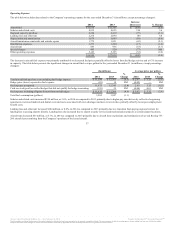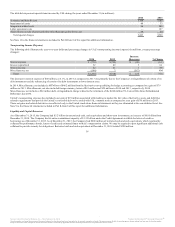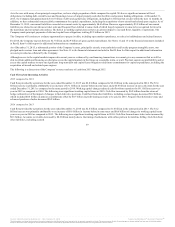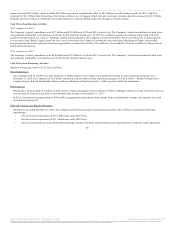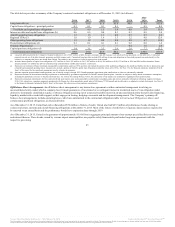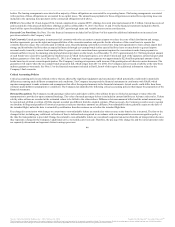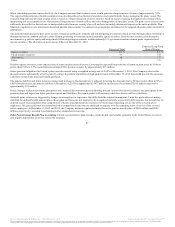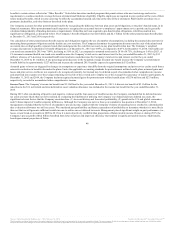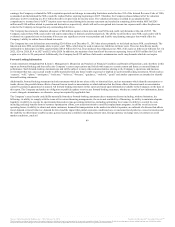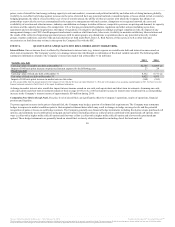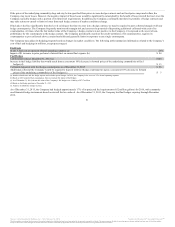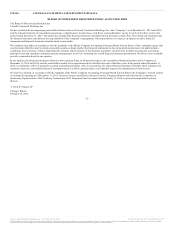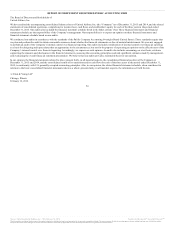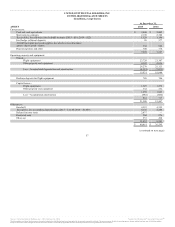United Airlines 2015 Annual Report Download - page 48
Download and view the complete annual report
Please find page 48 of the 2015 United Airlines annual report below. You can navigate through the pages in the report by either clicking on the pages listed below, or by using the keyword search tool below to find specific information within the annual report.
When calculating pension expense for 2016, the Company assumed that its plans’ assets would generate a long-term rate of return of approximately 7.0%.
The expected long-term rate of return assumption was developed based on historical experience and input from the trustee managing the plans’ assets. The
expected long-term rate of return on plan assets is based on a target allocation of assets, which is based on a goal of earning the highest rate of return while
maintaining risk at acceptable levels. Our projected long-term rate of return reflects the active management of our plans’ assets. The plans strive to have assets
sufficiently diversified so that adverse or unexpected results from one security class will not have an unduly detrimental impact on the entire portfolio. Plan
fiduciaries regularly review actual asset allocation and the pension plans’ investments are periodically rebalanced to the targeted allocation when considered
appropriate.
The defined benefit pension plans’ assets consist of return generating investments and risk mitigating investments which are held through direct ownership or
through interests in common collective trusts. Return generating investments include primarily equity securities, fixed-income securities and alternative
investments (e.g. private equity and hedge funds). Risk mitigating investments include primarily U.S. government and investment grade corporate fixed-
income securities. The allocation of assets was as follows at December 31, 2015:
Percent of Total
Expected Long-Term
Rate of Return
Equity securities 38 % 9.5 %
Fixed-income securities 37 5.0
Alternatives 18 7.3
Other 7 7.0
Pension expense increases as the expected rate of return on plan assets decreases. Lowering the expected long-term rate of return on plan assets by 50 basis
points (from 7.0% to 6.5%) would increase estimated 2016 pension expense by approximately $15 million.
Future pension obligations for United’s plans were discounted using a weighted average rate of 4.58% at December 31, 2015. The Company selected the
discount rate for substantially all of its plans by using a hypothetical portfolio of high quality bonds at December 31, 2015 that would provide the necessary
cash flows to match the projected benefit payments.
The pension liability and future pension expense both increase as the discount rate is reduced. Lowering the discount rate by 50 basis points (from 4.58% to
4.08%) would increase the pension liability at December 31, 2015 by approximately $477 million and increase the estimated 2016 pension expense by
approximately $55 million.
Future changes in plan asset returns, plan provisions, assumed discount rates, pension funding law and various other factors related to the participants in our
pension plans will impact our future pension expense and liabilities. We cannot predict with certainty what these factors will be in the future.
Actuarial gains or losses are triggered by changes in assumptions or experience that differ from the original assumptions. Under the applicable accounting
standards for defined benefit pension plans, those gains and losses are not required to be recognized currently as pension benefit expense, but instead may be
deferred as part of accumulated other comprehensive income and amortized into expense over the average remaining service life of the covered active
employees. All gains and losses in accumulated other comprehensive income are amortized to expense over the remaining years of service of the covered
active employees. At December 31, 2015 and 2014, the Company had unrecognized actuarial losses for pension benefit plans of $844 million and $982
million, respectively, recorded in accumulated other comprehensive income.
Other Postretirement Benefit Plan Accounting. United’s postretirement plan provides certain health care benefits, primarily in the United States, to retirees
and eligible dependents, as well as certain life insurance
47
Source: United Continental Holdings, Inc., 10-K, February 18, 2016 Powered by Morningstar® Document Research℠
The information contained herein may not be copied, adapted or distributed and is not warranted to be accurate, complete or timely. The user assumes all risks for any damages or losses arising from any use of this information,
except to the extent such damages or losses cannot be limited or excluded by applicable law. Past financial performance is no guarantee of future results.


